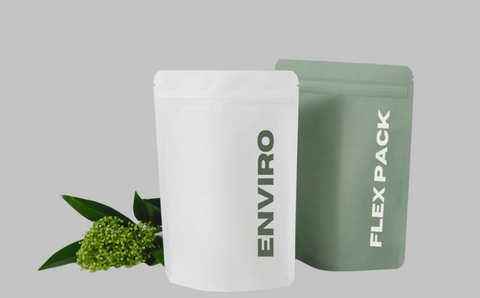Comparing Metallic Flexible Packaging to Traditional Rigid Metallic Containers
Packaging plays a crucial role in how products are preserved, transported, and presented to consumers. For products requiring superior protection from moisture, oxygen, and light such as food, pharmaceuticals, and supplements, metallic packaging has long been a trusted choice. Traditionally, rigid metal containers such as cans, tins, and jars have dominated this space. But in recent years, metallic flexible packaging has emerged as a compelling alternative offering many advantages that challenge the dominance of traditional containers.
Understanding the distinctions between these two packaging types is essential for manufacturers, brand owners, and supply chain professionals who want to optimize product protection, cost efficiency, and consumer appeal.
Barrier Performance and Product Preservation
The primary function of any packaging is to protect its contents. Rigid metallic containers excel in this regard due to their solid, impenetrable construction. They create an airtight, moisture-proof barrier that prevents contamination and extends shelf life. The inherent strength of metal also protects against physical damage during handling and shipping.
Metallic flexible packaging, on the other hand, relies on metalized films, typically aluminum foil laminates sandwiched between layers of plastic, to achieve similar barrier properties. These metalized films block out oxygen, moisture, and light effectively, creating a micro-environment that preserves freshness and prevents spoilage.
While rigid metal packaging offers near-impermeable protection, modern metallic flexible pouches have reached parity in barrier performance for many product types, including snacks, coffee, nutritional supplements, and some pharmaceuticals. Advances in lamination technology have enhanced their durability and barrier properties to levels that meet or exceed industry standards.
Check out our metallic pouches or get a custom quote today!
Weight, Transportation, and Environmental Impact
One of the most significant differences between rigid metal containers and flexible metallic packaging lies in weight. Metal cans and tins are inherently heavy and bulky. This weight translates directly into higher transportation costs and increased carbon emissions, factors that have become increasingly important as companies strive for sustainability and supply chain efficiency.
Flexible packaging offers a compelling alternative due to its remarkably lightweight nature. Metallic flexible pouches weigh a fraction of rigid metal containers, reducing fuel consumption and lowering shipping costs. This weight reduction also eases handling and distribution challenges for both manufacturers and retailers.
From an environmental standpoint, the lighter weight and smaller volume of flexible packaging mean a smaller carbon footprint in logistics. However, the recyclability of metallic flexible packaging remains a concern. Most flexible pouches are composed of multiple layers of different materials, including aluminum and plastics, which complicate recycling processes. Recycling infrastructure for multilayer films is still developing, limiting their current sustainability profile compared to metal cans, which are widely and efficiently recycled.
Space Efficiency and Storage Advantages
Storage and shelf space are premium commodities in retail and warehousing. Rigid metal containers, with their fixed shapes and sizes, consume a predictable but often substantial amount of space. Once emptied, they maintain their shape and volume, creating inefficiencies in waste handling.
Flexible metallic packaging, by contrast, conforms to the shape of its contents and can collapse when empty. This flexibility offers significant space savings. Brands benefit from reduced warehousing costs, and retailers gain the ability to display more products within limited shelf space.
The adaptability of flexible pouches also allows for a variety of formats including stand-up pouches, flat bags, and resealable options, offering versatility that rigid metal containers cannot match. This versatility enables brands to better meet consumer convenience needs and differentiate their products.
Cost Considerations and Manufacturing Efficiency
Cost is a critical factor in packaging decisions. Metal containers require heavy raw materials and more energy-intensive manufacturing processes, including stamping, forming, and coating. These factors generally result in higher production costs and minimum order quantities.
Metallic flexible packaging, although sometimes more costly than standard plastic films, often comes at a lower price point than rigid metal alternatives. The production process based on film extrusion and lamination is more streamlined and scalable. This allows for quicker turnaround times and smaller minimum orders, which is particularly advantageous for emerging brands and limited product runs.
Additionally, the reduced weight of flexible packaging lowers transportation and storage costs, offering further economic benefits across the supply chain.
Consumer Appeal and Branding Opportunities
Packaging also serves as a vital marketing tool. Both rigid metal containers and metallic flexible pouches offer opportunities for striking visual impact. Metal cans and tins can be embossed, printed, and finished with metallic inks or coatings that convey premium quality.
However, flexible metallic packaging expands creative possibilities. It allows for full-color digital printing with high resolution on all surfaces, giving brands the ability to showcase vibrant, complex graphics and product information. The incorporation of features like resealable zippers, tear notches, and transparent windows enhances usability and consumer engagement.
Metallic flexible pouches also align with trends toward lightweight, convenient packaging favored by modern consumers. The tactile experience of a pouch combined with metallic sheen offers a premium feel while supporting portability and ease of use.
Sustainability Tradeoffs
Sustainability has become a defining concern in packaging decisions. While flexible packaging’s reduced material use and lighter weight contribute to lower carbon emissions during transport, its recyclability challenges temper these advantages.
Rigid metal containers benefit from well-established recycling programs with high recovery rates, making them a reliable choice for brands prioritizing circularity.
Nonetheless, the flexible packaging industry is innovating rapidly. Developments in mono-material metallic films and improved recycling technologies suggest a promising future where metallic flexible packaging can combine barrier performance with environmental responsibility.
The Bottom Line
Metallic flexible packaging is reshaping the landscape once dominated by rigid metal containers. While traditional cans and tins remain unrivaled in certain protective qualities and recyclability, flexible pouches offer compelling advantages in weight, cost, space efficiency, and branding versatility.
Brands seeking to optimize their packaging should weigh these factors carefully. For many products, especially those shipped in high volumes or requiring consumer convenience features, metallic flexible packaging provides a modern, efficient, and attractive solution.
As the industry advances toward more sustainable materials and recycling infrastructure, metallic flexible packaging is poised to play an even greater role in the future of product packaging.







Comments (0)
There are no comments for this article. Be the first one to leave a message!